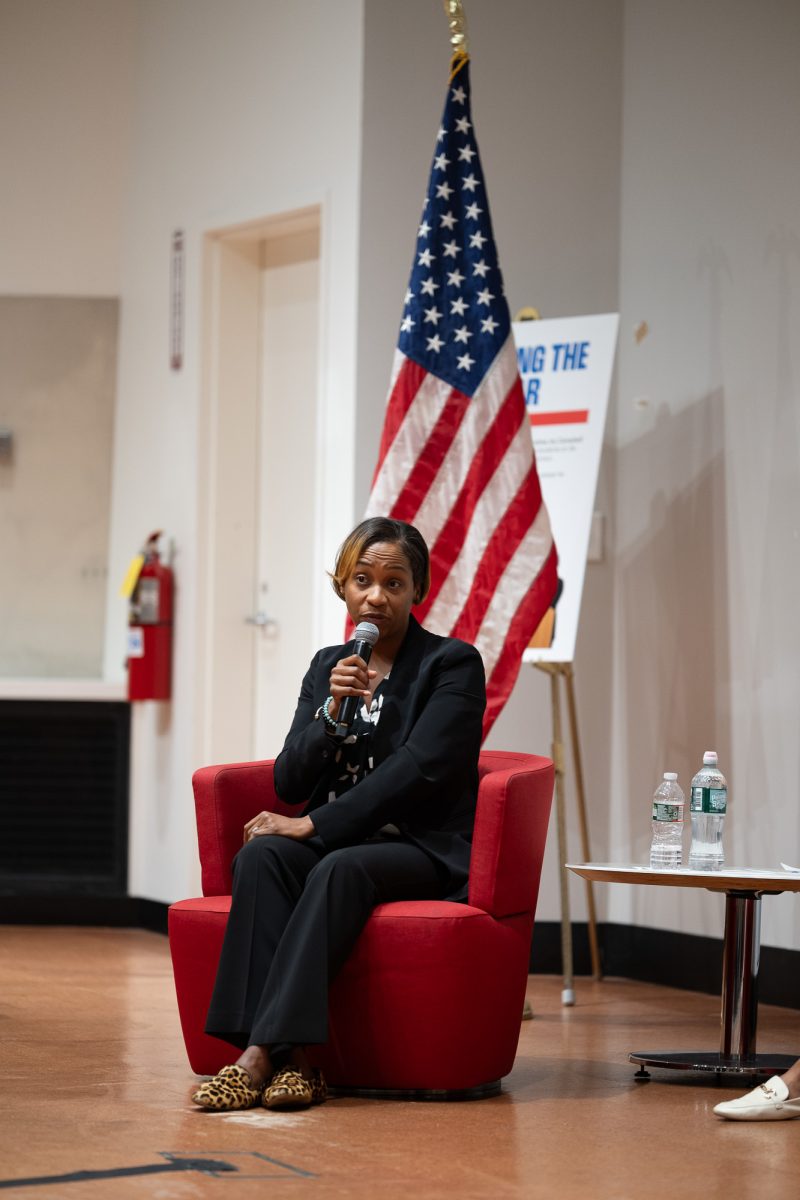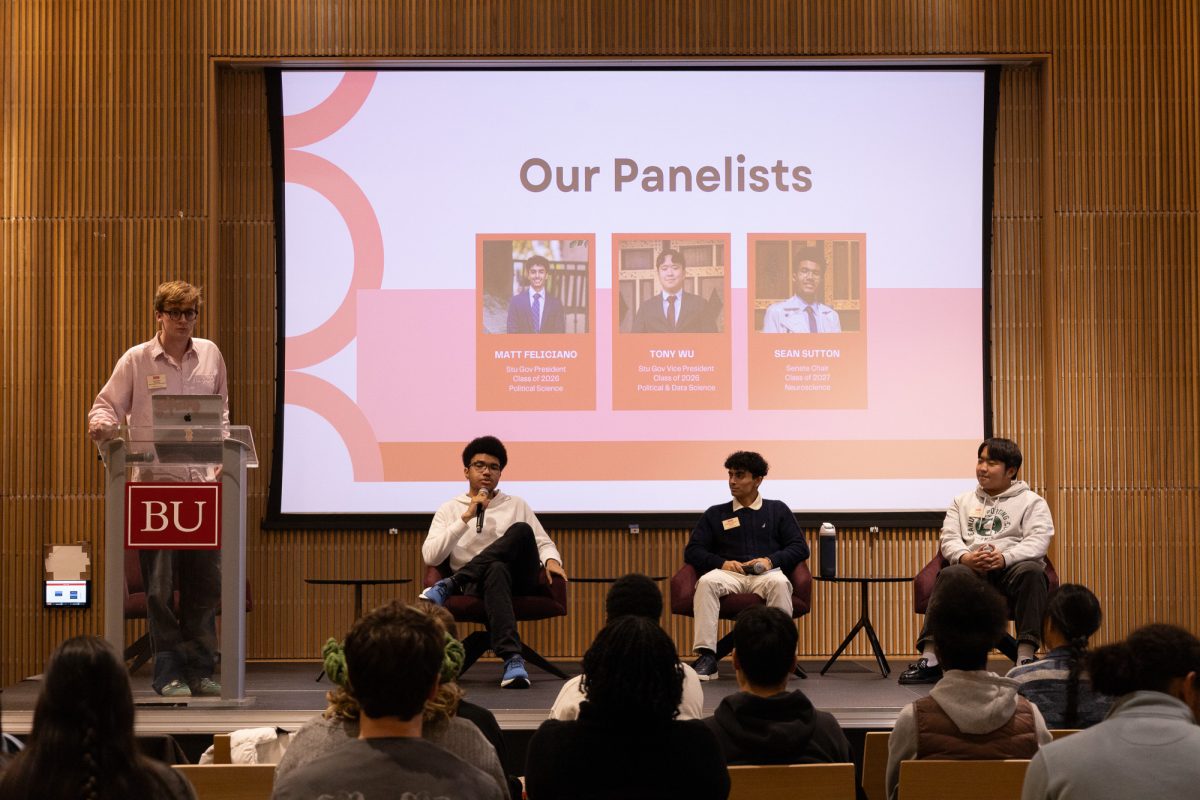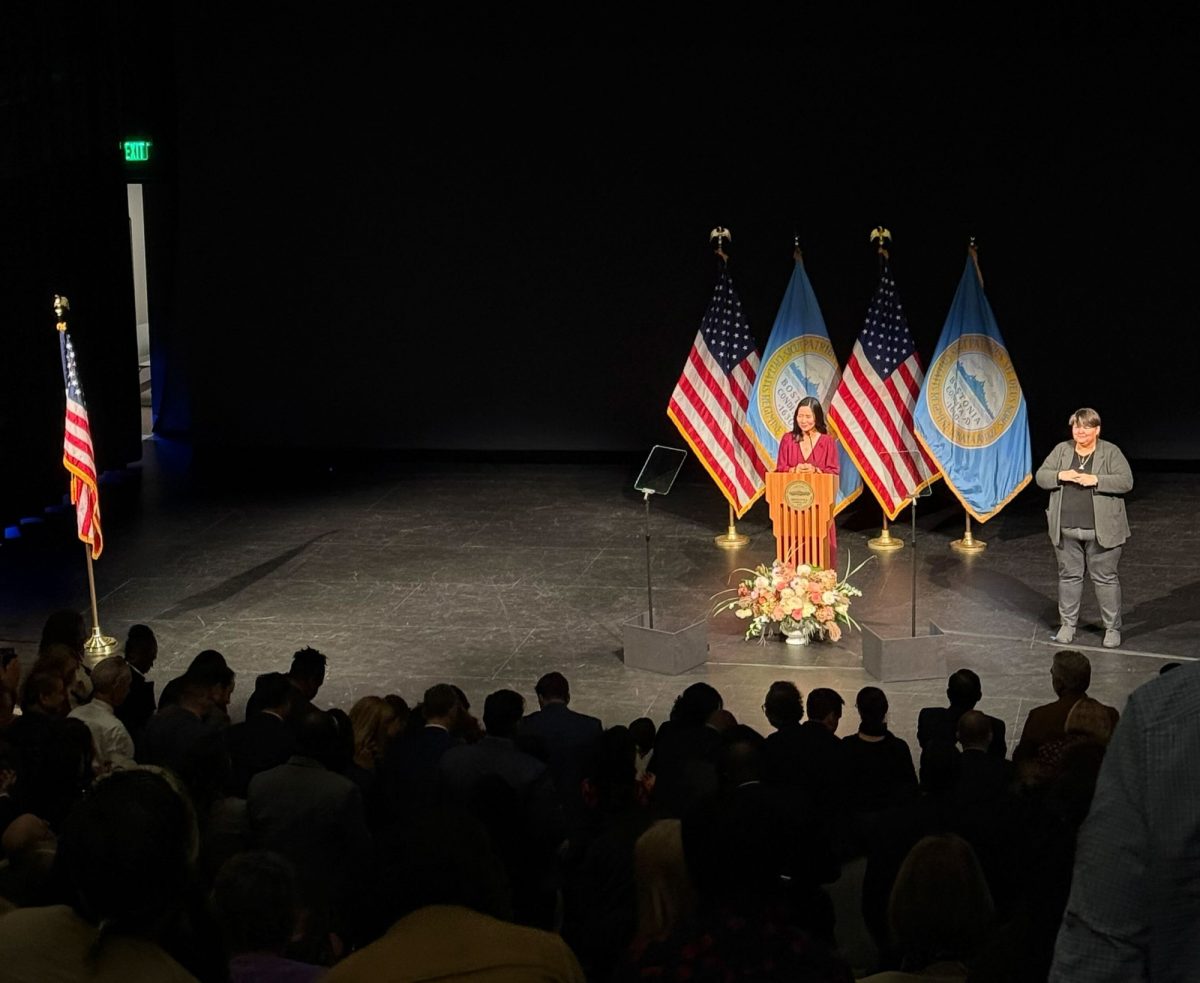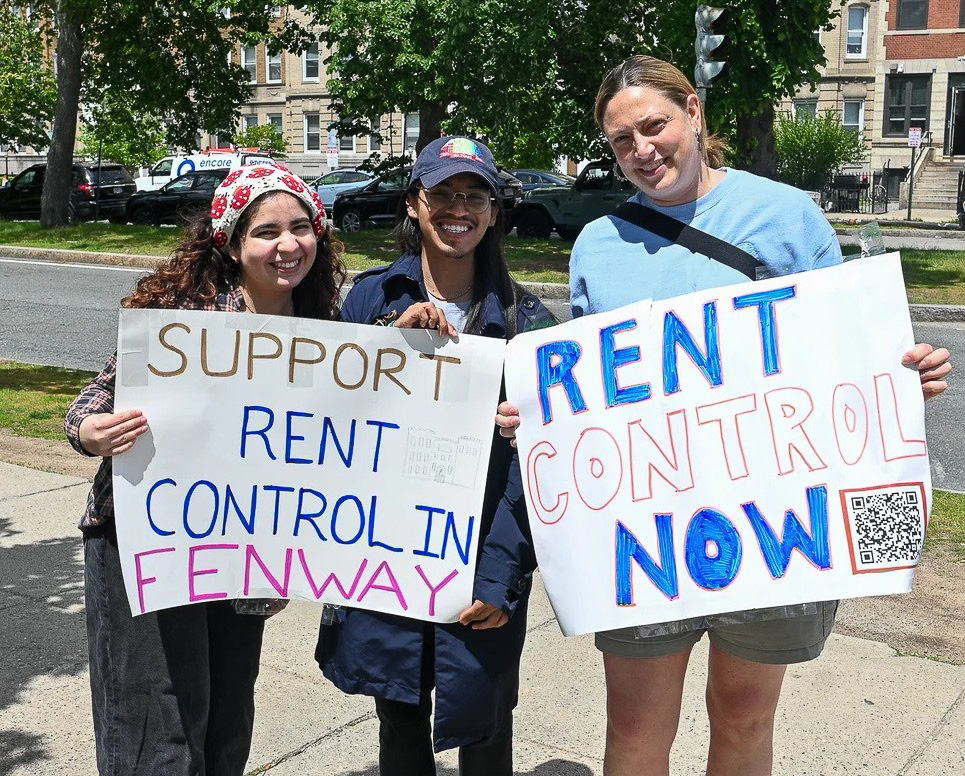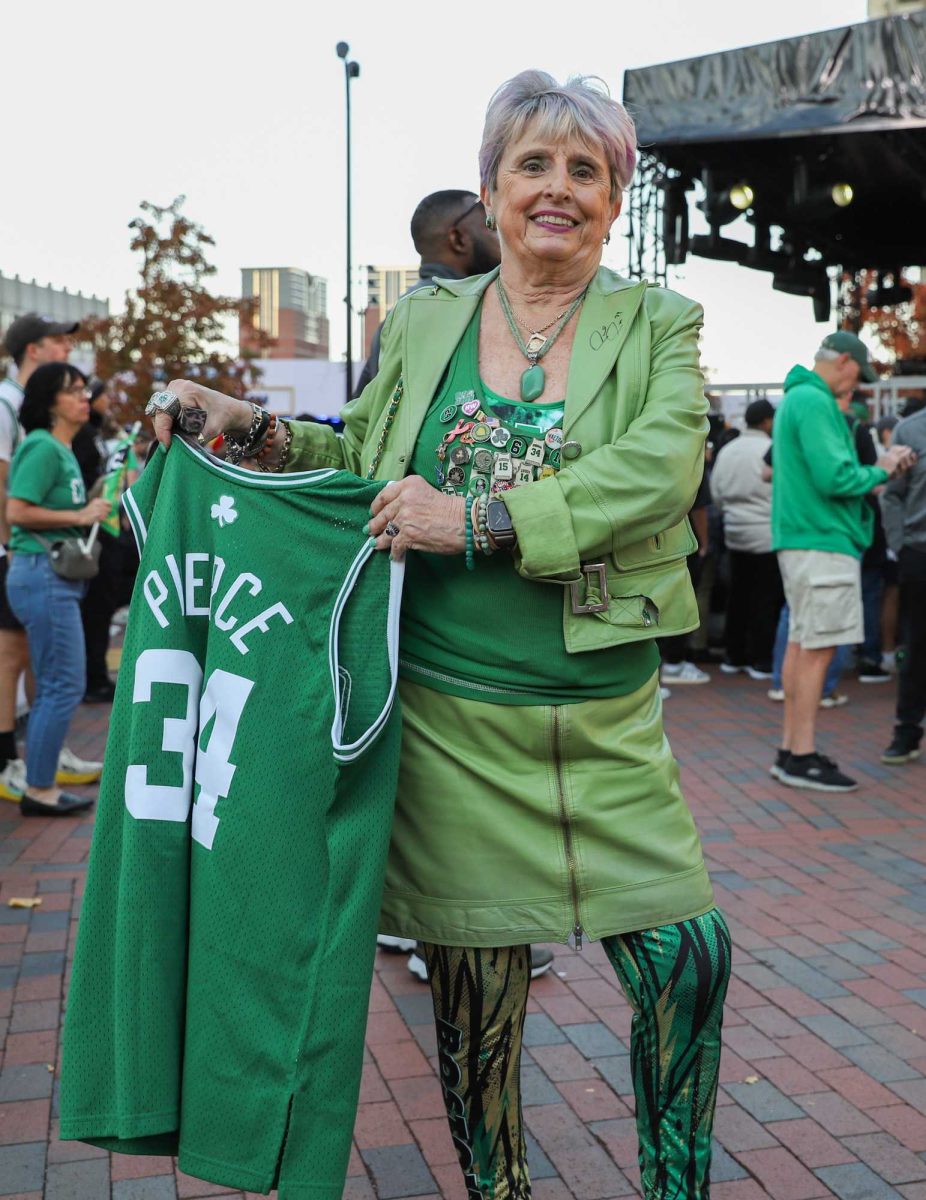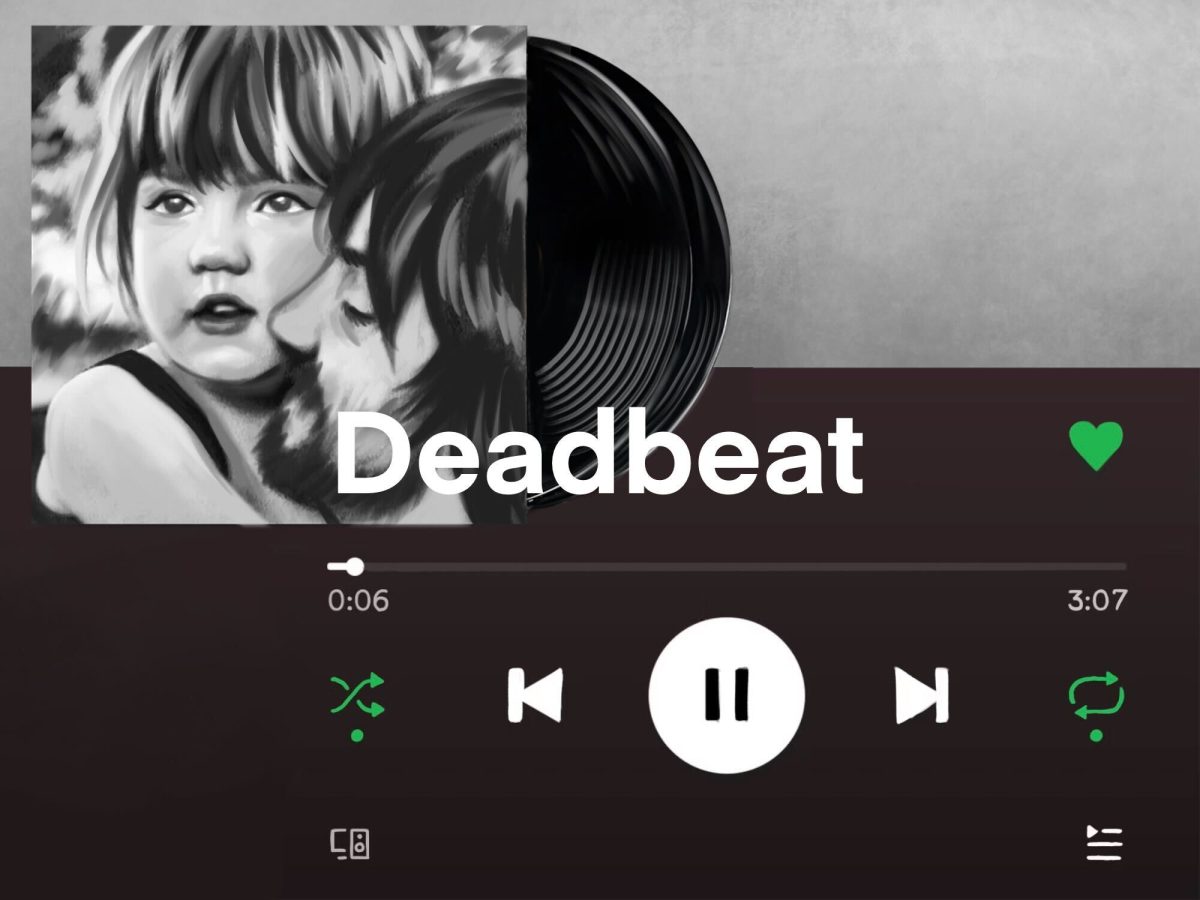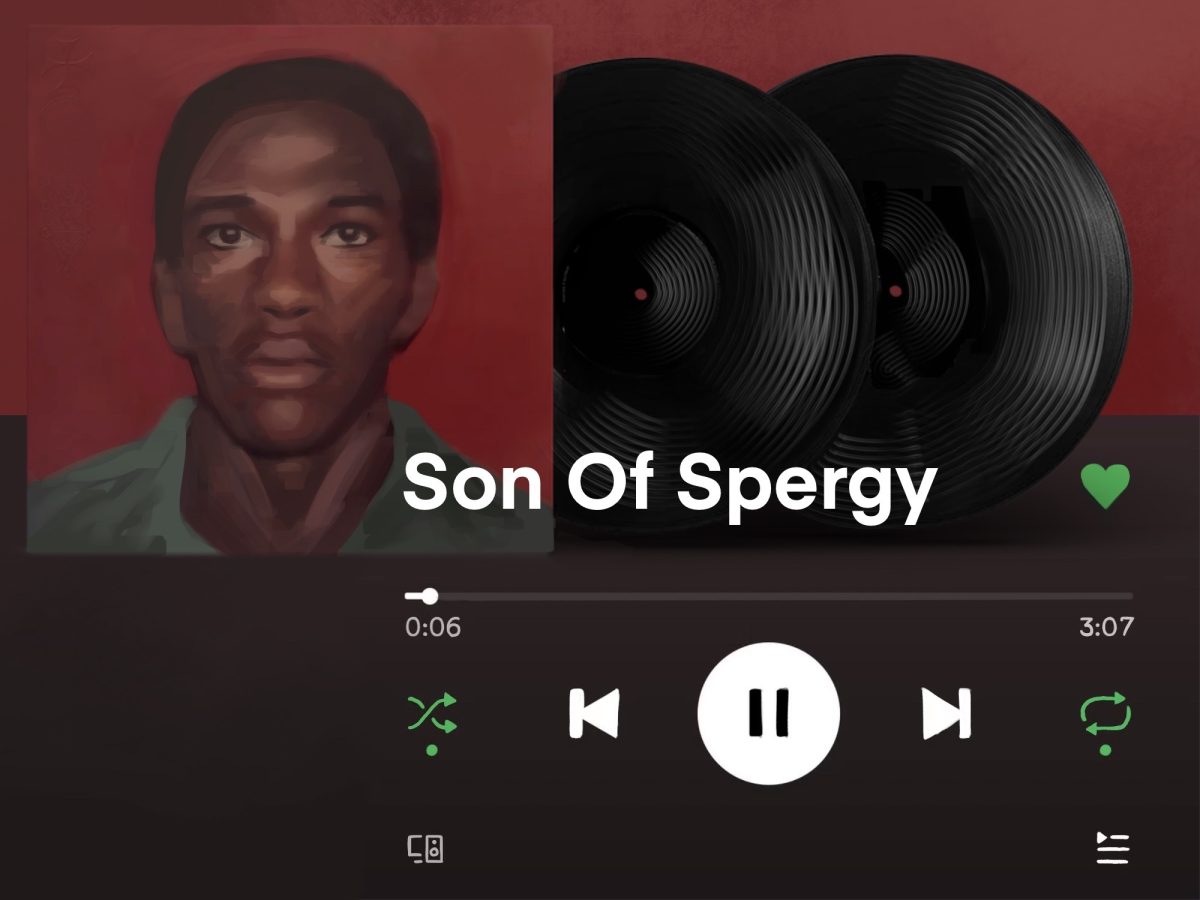In 2011, University of Washington professor Jennifer Stuber’s husband killed himself. A 40-year-old corporate lawyer during the U.S. economic recession, Matt Adler struggled with depression and anxiety, but these risk factors combined with the availability of a means to commit suicide made all the difference.
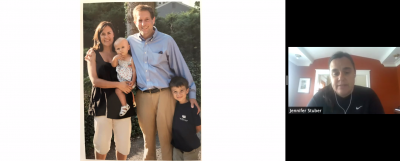
“Half of the United States right now has been directly impacted by suicide,” Stuber said. “He had easy access to a firearm, because it turns out they’re very easy to purchase, in his case he didn’t own it already, but he did legally purchase a firearm, that he then used to end his life.”
Stuber, who is the director of Forefront Suicide Prevention, became a suicidologist because of her personal tragedy. She spoke about her and her husband’s story on Thursday as part of the “Understanding Suicide” panel hosted by Boston University’s School of Public Health. The event was the first in a series of “Stopping Suicide” discussions to spread social awareness and educate audiences on the issue from a public health perspective.
During the presentations, Stuber continued her discussion by focusing on firearm accessibility. She said that use of firearms accounts for 50 percent of suicides, and that the COVID-19 pandemic poses risks for people already struggling with suicide ideation or other mental illnesses.
“In terms of the economic downturn, increasing levels of isolation, hopelessness, and then also we have the highest rates of firearms ownership ever in the United States during the COVID pandemic,” Stuber said. “I don’t see this as a foregone conclusion in any way that we’re going to have an increase in suicide rates, but my goodness, we need to get in front of this perfect storm and we need to do it right now.”
The consequences of these elevated risk factors are still difficult to predict, Stuber said, but simply locking away medications and firearms would decrease those means and protect communities.
Julia Raifman, an assistant professor of health law, policy and management at SPH who helped develop the panel, wrote in an email that several factors during these times are putting many people in danger of suicide or self-harm.
“It is a time in which several stressors are simultaneously affecting the US population for a prolonged period of time, and the risk of suicide is dire,” Raifman wrote. “We have already seen evidence that mental health has worsened for everyone during the COVID-19 pandemic and that is especially true for people who are living in low-income households, young people, and people who are socially isolated.”
Sarah Lipson, an assistant professor at SPH, spoke at the panel about college students’ access to harmful materials. Lipson leads the Healthy Minds Study — examining the mental health and resources at various colleges and universities — which BU participates in.
Lipson said in an interview after the event that the University’s efforts to provide resources and educational support can combat mistruths surrounding suicide.
“Suicide is something that is not talked about enough. Theres’s stigma, there’s misunderstandings,” Lipson said. “What I think is really valuable and amazing about this symposium … is really inviting a dialogue around, what do we know about suicide, what are the ways that we can be understanding inequalities in suicide?”
Olga Aguirre, a junior in the College of Arts and Sciences, said she had used BU’s Student Health Services last year when she was looking for therapy, but was disappointed in the lack of diverse care the University offered.
“I wanted to get a therapist and BU only really offers counseling for short-term trauma,” Aguirre said. “It took me months, really, to find a therapist that was accepting new patients, was actually doing things that I wanted, like psychotherapy, and focuses on depression, anxiety and stuff like that.”
Aguirre, who studies psychology, said her approach to and understanding of mental health is aided by her studies, but that others who are learning to identify risk factors need more than panel discussions from experts.
“Awareness is great and everything, but it’s not just being aware of what’s going on, it’s actually knowing what to do about it, how you can spot it,” Aquirre said. “I feel like if people were to have an open dialogue about it, actual students who are struggling with this … I think it’s just more genuine if it comes from someone who’s actually experienced it.”
WBUR producer and reporter Lynn Jolicoeur has contributed to those conversations: her news beats have covered mental illness and suicide for several years now. Jolicoeur, who moderated Thursday’s panel, said reporting on suicide outside of public figures remains somewhat taboo or unimportant for newsrooms to consider covering.
“I was always told as a young journalist, we don’t cover suicides,” Joliocoeur said in an interview. “The more I learned about it, later on, I really came to feel like the media is part of this, sweeping the issue under the rug or contributing to stigma because it’s just something we don’t talk about and cover as an issue.”
In order to reduce the prevalence of suicide, specifically among college students, Lipson said professors should start by treating mental health like a typical illness and provide resources and lifelines directly to students.
“I think faculty have a responsibility to include information about mental health in course syllabi, to talk about the availability of those resources,” Lipson said. “To have that basic knowledge that they can impart to students is one tactic right now that’s really effective.”


